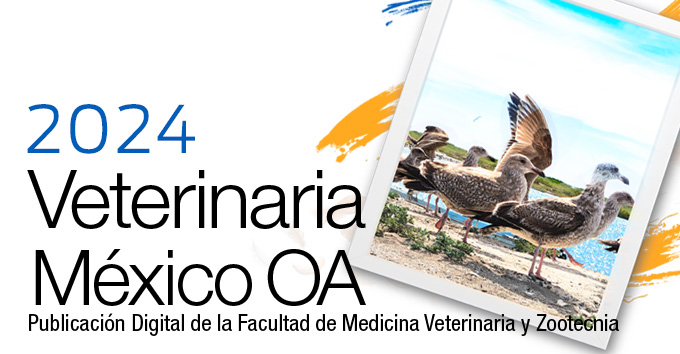Efficiency of ozone (O3) therapy on experimental acidic skin burns in rats
Contenido principal del artículo
Resumen
En este estudio, el objetivo fue investigar la eficacia de la terapia con O3 en quemaduras cutáneas por HF inducidas experimentalmente en ratas. Como material se empleó un total de 20 ratas sanas Wistar Albino macho (de 16 semanas de edad y con un peso de 250-300 g). Se dividieron en 2 grupos (grupo experimental y control) de 10 ratas que fueron alojadas individualmente y alimentadas ad libitum. Las quemaduras cutáneas con ácido fluorhídrico (HF) fueron inducidas en todos los animales. Durante 7 días, se aplicó tópicamente al grupo experimental la vaselina líquida ozonizada (20 µg O3/mL) y, paralelamente, una solución salina al grupo control. En este estudio se valoró la evaluación histopatológica, la inflamación, la vascularización, la regeneración epitelial y la fibrosis.
La proliferación epitelial y la colagenización fueron mayores y estadísticamente significativas en el grupo experimental, mientras que la infiltración lo fue en el grupo control. Como resultado de este estudio, se observó que el ozono juega un papel importante en el proceso de reparación de tejidos en quemaduras químicas. El aumento de la activación de fibroblastos y la reepitelización en el grupo experimental demostró que la terapia con ozono se podría proponer para los primeros auxilios en las quemaduras cutáneas por HF. Se concluyó que se deben realizar más estudios relacionados con el ozono para esclarecer el tema.
Detalles del artículo
Citas
Arda MS, Kuas N, Söztutar E, Koçman AE, İlhan H. Comparison of burn depth at different temperatures on ex vivo human skin with standardized model and comparison of the results with rat contact burn model. Pediatric Research. 2018;5(2):88-91. doi: 10.4274/jpr.47113.
McKee D, Thoma A, Bailey K, Fish Z. A review of hydrofluoric acid burn management. Plastic Surgery. 2014;22(2):95-98. doi: 10.1177/229255031402200202.
Üstebay S, Öztürk Ö, Bilge A, Üstebay DÜ, Tezcan AH. Impacts of ozone treatment and its relationship with IGF-1 levels after injury of soft tissue: an experimental study in rats model. Kafkas Universitesi Veteriner Fakültesi Dergisi. 2017;23(6):967-971. doi: 10.9775/kvfd.2017.18058.
Fitzpatrick E, Holland OJ, Vanderlelie JJ. Ozone therapy for the treatment of chronic wounds: a systematic review. International Wound Journal. 2018;15(4):633-644. doi: 10.1111/iwj.12907.
Pivotto AP, Banhuk FW, Staffen IV, Daga MA, Ayala TS, Menolli RA. Clinical uses and molecular aspects of ozone therapy: a review. Online Journal of Biological Sciences. 2020;20(1):37-49. doi: 10.3844/ojbsci.2020.37.49.
Cavallini M, Casati A. A prospective, randomized, blind comparison between saline, calcium glukonate and diphoterine for washing skin acid injuries in rats: effects on substance p and β endorphin release. European Journal of Anesthesiology. 2004;21:389-392. doi: 10.1017/S0265021504005071.
Saracoglu A, Kuzucuoglu T, Yakupoglu S, Tuncay E, Demirhan R. Chemical burn injury due to hydrofluoric acid: a case of successful management without hexafluorine. Marmara Medical Journal. 2015;28:161-164. doi: 10.5472/MMJcr.2803.02.
Guven A, Gundogdu G, Sadir S, Topal T, Erdogan E, Korkmaz A, Surer I, Ozturk H. The efficacy of ozone therapyin experimental caustic esophageal burn. Journal of Pediatric Surgery. 2008;43:1679-1684. doi: 10.1016/j.jpedsurg.2008.01.064.
Valacchi G, Fortino V, Bocci V. The dual action of ozone on the skin. British Journal of Dermatology. 2005;153(6):1096-1100. doi: 10.1111/j.1365-2133.2005.06939.x.
Zeng J, Lu J. Mechanisms of action involved in ozone-therapy in skin diseases. International Immunopharmacology. 2018;56(138):235-241. doi: 10.1016/j.intimp.2018.01.040.
Rippa AL, Kalabusheva EP, Varotelyak EA. Regeneration of dermis: scarring and cells involved. Cells. 2019;8(6):607. doi: 10.3390/cells8060607.
Roblin I, Urban M, Flicoteau D, Martin C, Pradeau D. Topical treatment of experimental hydrofluoric acid skin burns by 2.5% calcium gluconate. Journal of Burn Care & Research. 2006;27(6):889-894. doi: 10.1097/01.BCR.0000245767.54278.09.
Kodik MS, Akdemir O, Lineawear WC, Cavusoglu T, Ozsarac M, Aktug H,Songur E, Tiftikoglu YO. Comparison of skin effects of immediate treatment modalities in experimentally induced hydrofluoric acid skin burns. International Wound Journal. 2015; 12(6):716-723. doi: 10.1111/iwj.12214.
Pchepiorka R, Moreira MS, Lascane NA, Catalani LH, Allegrini S, Lima NB, Gonçalves F. Effect of ozone therapy on wound healing in the buccal mucosa of rats. Archives of Oral Biology. 2020;119(1):1-7. doi: 10.1016/j.archoralbio.2020.104889.
Naik SV, Rajeshwari K, Kohli S. Ozone-a biological therapy indentistry-reality or myth?. The Open Dentistry Journal. 2016;10(1):196-206. doi: 10.2174/1874210601610010196.
Kim HS, Noh SU, Han YW, Kim KM, Kang H, Kim HO, Park YM. Therapeutic effects of topical application of ozone on acute cutaneous wound healing. Journal of Korean Medical Science. 2009;24:368-374. doi: 10.3346/jkms.2009.24.3.368.
Ripamonti CI, Maniezzo M, Boldini S, Pessi MA, Mariani L, Cislaghi E. Efficacy and tolerability of medical ozone gas insufflations in patients with osteonecrosis of the jaw treated with bisphosphonates preliminary data medical ozone gas insufflation in treating onj lesions. Journal of Bone Oncology. 2012;1:81-87. doi: 10.1016/j.jbo.2012.08.001.
Diaz JH, Lopez FA. Skin, soft tissue and systemic bacterial infections following aquatic injuries and exposures. The American Journal of the Medical Sciences. 2015;349(3):269-275. doi: 10.1097/MAJ.0000000000000366.
License

Veterinaria México OA por Facultad de Medicina Veterinaria y Zootecnia de la Universidad Nacional Autónoma de México se distribuye bajo una Licencia Creative Commons Atribución 4.0 Internacional.
Basada en una obra en http://www.revistas.unam.mx
- Todos los artículos en Veterinaria México OA se publican bajo una licencia de Creative Commons Reconocimiento 4.0 Unported (CC-BY 4.0). Con esta licencia, los autores retienen el derecho de autor, pero permiten a cualquier usuario compartir, copiar, distribuir, transmitir, adaptar y hacer uso comercial de la obra sin necesidad de proporcionar un permiso adicional, siempre y cuando se otorgue el debido reconocimiento al autor o fuente original.
- Al utilizar esta licencia, los artículos en Veterinaria México OA cubren o exceden todos los requisitos fundacionales e institucionales para ser considerados de Acceso Abierto.
- Los autores no pueden utilizar material protegido por derechos de autor en su artículo a menos que ese material esté también disponible bajo una licencia igualmente generosa.



